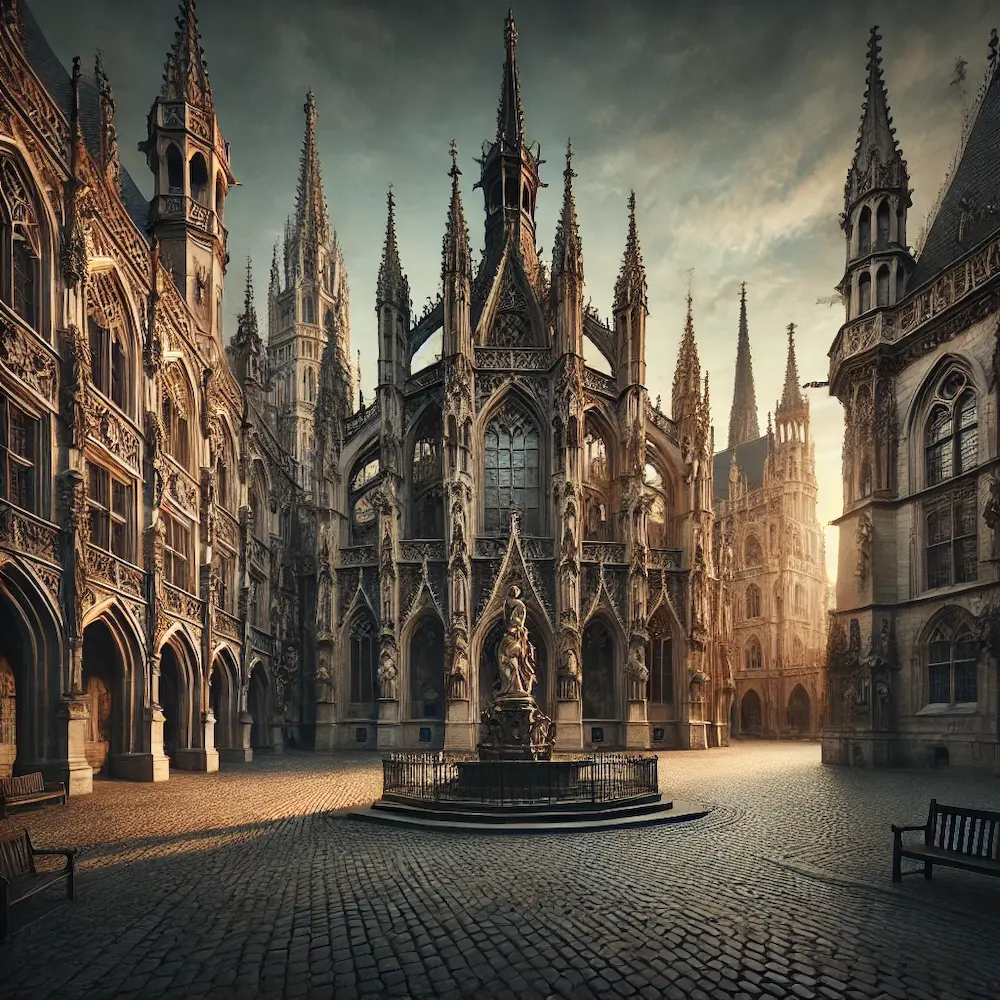Gothic squares, central to medieval urban life, are surrounded by structures exemplifying Gothic architecture’s grandeur. These squares served as hubs for commerce, governance, and social interaction, reflecting the era’s architectural and cultural ethos.
History and Origins of Gothic Squares
Emerging in the 12th century during the High Middle Ages, Gothic architecture introduced innovations like pointed arches, ribbed vaults, and flying buttresses. These features allowed for taller, more luminous structures, influencing the design of public spaces. Gothic squares became focal points in European cities, often flanked by cathedrals, town halls, and guild houses, showcasing the period’s architectural advancements.
Key Features of Gothic Squares
- Architectural Cohesion: Buildings surrounding these squares typically exhibit Gothic elements such as pointed arches, intricate facades, and large stained-glass windows.
- Central Monuments: Many squares feature central fountains or statues, often with religious or historical significance.
- Spatial Design: The layout facilitates public gatherings, markets, and events, reflecting the communal nature of medieval society.
Applications of Gothic Squares
Historically, these squares hosted markets, public ceremonies, and served as meeting points for citizens. Today, they remain vibrant centers for tourism, cultural events, and social interactions, preserving the historical ambiance while integrating modern activities.
Considerations When Visiting Gothic Squares
- Preservation Status: Some squares have undergone restorations; understanding their history enhances appreciation.
- Cultural Etiquette: Recognize the cultural and historical significance of these sites; respect local customs and preservation efforts.
Conclusion
Gothic squares offer a window into medieval Europe’s architectural and social fabric. Their enduring presence in modern cities underscores the lasting impact of Gothic architecture and the communal spaces it inspired.
